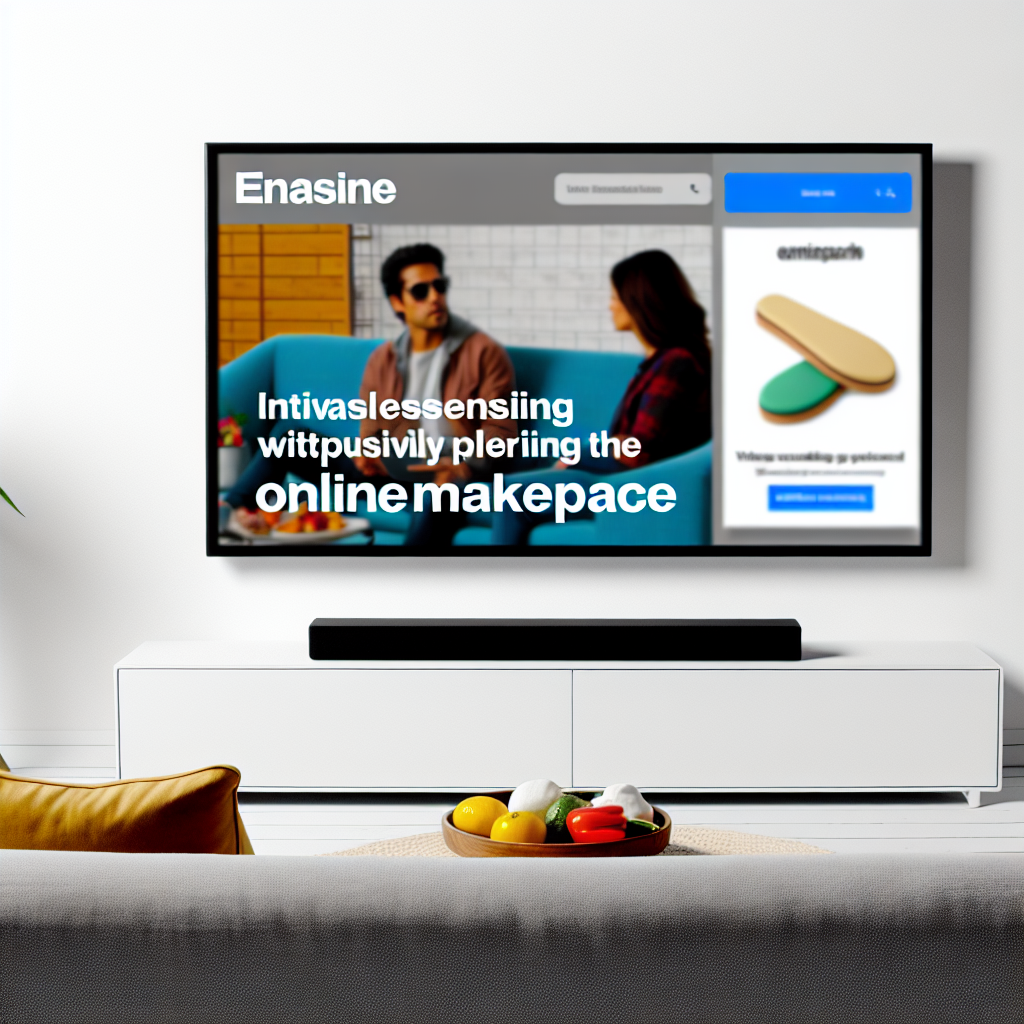The Impact of Advertising on Prime Video Subscribers: A Closer Look
Prime Video subscribers will soon be seeing ads for Amazon products when they hit pause on their favorite shows and movies. This move by Amazon has sparked a lot of discussion and debate about the impact of advertising on Prime Video subscribers. In this article, we will take a closer look at the potential effects of this new advertising strategy.
First and foremost, it is important to understand why Amazon has decided to introduce ads on Prime Video. As a company, Amazon is always looking for new ways to generate revenue and increase its bottom line. With the immense popularity of Prime Video, it only makes sense for Amazon to explore advertising as a potential source of income. By displaying ads for their own products when users pause their content, Amazon can effectively promote their offerings and potentially drive more sales.
However, the introduction of ads on Prime Video has raised concerns among subscribers. Many users have grown accustomed to an ad-free experience on the platform and may be resistant to this change. Some argue that the presence of ads will disrupt the viewing experience and detract from the overall enjoyment of the content. Additionally, there are concerns that this move may be a slippery slope, leading to more intrusive and frequent ads in the future.
On the other hand, proponents of this new advertising strategy argue that it is a necessary step for Amazon to continue offering high-quality content at an affordable price. Prime Video has been able to provide a vast library of movies and TV shows at a relatively low cost due to the revenue generated from Prime subscriptions. By introducing ads, Amazon can potentially offset some of the costs associated with content licensing and production, allowing them to continue offering a wide range of content to subscribers.
Another aspect to consider is the potential impact on user behavior. With ads appearing when users hit pause, there is a possibility that subscribers may be more inclined to make impulsive purchases. By strategically displaying ads for relevant products, Amazon can capitalize on the moment when users are actively engaged with the platform. This could lead to increased sales and revenue for the company.
However, it is important to note that the success of this advertising strategy will heavily depend on its implementation. If the ads are intrusive, disruptive, or irrelevant to the user, it may lead to frustration and a negative user experience. Amazon will need to carefully consider the frequency and relevance of the ads to ensure that they enhance rather than detract from the viewing experience.
In conclusion, the introduction of ads on Prime Video has sparked a lot of discussion about the impact on subscribers. While some may be resistant to this change, it is important to consider the potential benefits, such as increased revenue for Amazon and the ability to continue offering a wide range of content at an affordable price. However, the success of this advertising strategy will ultimately depend on its implementation and the ability to strike a balance between generating revenue and providing a positive user experience. Only time will tell how Prime Video subscribers will respond to this new advertising approach.
Understanding the Introduction of Ads on Prime Video: Pros and Cons
Prime Video subs will soon see ads for Amazon products when they hit pause. This move by Amazon has sparked a debate among subscribers, with some seeing it as a convenient way to discover new products and others viewing it as an intrusion on their viewing experience. In this article, we will explore the pros and cons of introducing ads on Prime Video.
One of the main advantages of ads on Prime Video is the potential for users to discover new products. With millions of subscribers worldwide, Prime Video has a vast audience that advertisers can tap into. By displaying ads when users pause their content, Amazon can showcase relevant products that viewers may find interesting. This can be particularly beneficial for small businesses and independent sellers who may not have the resources to advertise on traditional platforms. Ads on Prime Video can level the playing field and provide exposure to a wider audience.
Additionally, ads on Prime Video could potentially lead to lower subscription costs for users. By generating revenue through advertising, Amazon may be able to offset some of the costs associated with producing and licensing content. This could result in more affordable subscription plans, making Prime Video accessible to a larger audience. For budget-conscious viewers, this could be a significant advantage, as they can enjoy a wide range of content at a lower price point.
However, the introduction of ads on Prime Video also raises concerns among subscribers. One of the main drawbacks is the potential disruption to the viewing experience. Many users turn to streaming services to escape the constant bombardment of ads that traditional television often presents. By introducing ads on Prime Video, Amazon risks alienating subscribers who value the uninterrupted nature of their streaming experience. The annoyance factor of ads during a pause could outweigh any potential benefits for some viewers.
Furthermore, there are concerns about the privacy implications of targeted advertising on Prime Video. Amazon already collects a vast amount of data on its users’ viewing habits and purchasing behavior. By using this data to display targeted ads, there is a risk of further invasion of privacy. Some subscribers may feel uncomfortable with the idea of their viewing habits being used to serve them ads, even if they are relevant to their interests. This raises questions about the extent to which companies should be allowed to use personal data for advertising purposes.
In conclusion, the introduction of ads on Prime Video has both pros and cons. On one hand, it can provide a platform for small businesses to reach a wider audience and potentially lead to lower subscription costs for users. On the other hand, it may disrupt the viewing experience and raise concerns about privacy. Ultimately, the success of this new feature will depend on how Amazon balances the benefits of advertising with the preferences and concerns of its subscribers. As the rollout of ads on Prime Video approaches, it will be interesting to see how users respond and whether Amazon can strike the right balance between monetization and user satisfaction.
Exploring the Future of Prime Video Subscriptions with Amazon Product Ads
Prime Video subscribers will soon be seeing a new addition to their streaming experience. Amazon has announced that it will be introducing ads for its own products when users hit pause on their favorite shows and movies. This move is part of Amazon’s ongoing efforts to monetize its streaming service and leverage its vast product catalog.
The decision to introduce ads during pause breaks may come as a surprise to some Prime Video subscribers who have become accustomed to an ad-free viewing experience. However, it is important to note that these ads will only be for Amazon products and will not disrupt the actual content being watched. This means that viewers can still enjoy their favorite shows and movies uninterrupted, while also being exposed to relevant product recommendations.
The introduction of these ads is a strategic move by Amazon to tap into the immense potential of its Prime Video subscriber base. With millions of users worldwide, Prime Video has become a major player in the streaming industry, competing with the likes of Netflix and Hulu. By leveraging its own product catalog, Amazon aims to create a seamless shopping experience for its customers, allowing them to discover and purchase products they may be interested in while enjoying their favorite content.
One of the key advantages of introducing ads during pause breaks is the ability to target viewers with highly relevant product recommendations. Amazon has access to a wealth of data on its customers’ viewing habits, purchase history, and preferences. This data can be used to deliver personalized ads that are more likely to resonate with viewers and drive conversions. For example, if a viewer frequently watches cooking shows, they may be shown ads for kitchen gadgets or cookbooks available on Amazon.
While some viewers may view these ads as intrusive, it is important to consider the potential benefits they can bring. By introducing ads for its own products, Amazon can potentially offer exclusive discounts or promotions to Prime Video subscribers. This can create a win-win situation for both Amazon and its customers, as viewers can take advantage of special offers while Amazon generates additional revenue.
It is worth noting that Amazon is not the first streaming service to introduce ads during pause breaks. Hulu, for example, has been doing this for some time now, and it has proven to be a successful revenue stream for the company. By following in Hulu’s footsteps, Amazon is taking a page out of the playbook of a successful competitor and adapting it to its own platform.
In conclusion, the introduction of ads for Amazon products during pause breaks on Prime Video is a strategic move by the company to monetize its streaming service and leverage its vast product catalog. While some viewers may view these ads as intrusive, they offer the potential for highly relevant product recommendations and exclusive discounts. By following in the footsteps of successful competitors like Hulu, Amazon aims to create a seamless shopping experience for its customers while they enjoy their favorite content. As the future of Prime Video subscriptions unfolds, it will be interesting to see how viewers respond to this new addition to their streaming experience.


